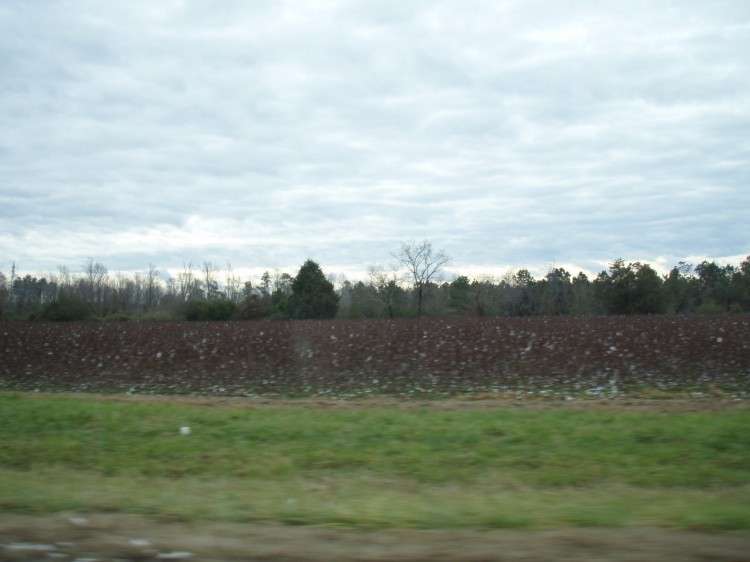On a trip to North Carolina for a training session, Nathan and I went to the NASCAR Hall of Fame in Charlotte. It was everything we had hoped and dreamed.
One of the first NASCAR cars.

The personal and professional website of Douglas Van Bossuyt
Last week I went to Charlotte, North Carolina for training at EPRI. Somehow we ended up with a Dodge Challenger as our rental car. Perhaps there are other versions of this car with a better engine and a manual transmission. Aside from the nice looks, we found our particular rental car gutless.
After our training wrapped up early Friday afternoon, we had a couple of hours to kill before our flight back to the west coast. Nathan, my coworker, found a list of 50 free things to do in the greater Charlotte area. One of the listed activities was a visit to the Reed Gold Mine in Midland, NC on the Little Meadow Creek. A short drive later, we arrived at the site of America’s first commercial gold discovery and mine.
Out front was an OR cart. We looked around but couldn’t find the AND cart. (Boolean algebra humor)
In the little museum we found many interesting pieces of machinery. Back when the mines were active in North Carolina, everything was powered by steam and compressed air.
Old sluice boxes outside on the lawn.
The mighty Little Meadow Creek where a very large 17 pound gold nugget was found in 1799 and sold in 1803 for $3.50 when it was worth $3600.
Placer mine pits still visible. I imagine that this whole little creek bottom was turned over several times in the hunt for gold and gold dust.
A couple of ore carts. This mine site never used carts but some have been brought from other mines around the state.
An adit entrance to the mine. Amazingly, the state park allows people to wander around inside part of the mine un-escorted!
Looking into the mine with Nathan standing in the middle of the frame. The mine would originally have been no more than five feet high. When the park was opened, the mine was excavated further to allow people to walk through the mine without bending over in order to get a feel for how it would have been in the old days. This is way different than what Zach and I found at the Daydream Mine in Australia! At least Nathan and I didn’t see any bogan light shows here like Zach and I did in the Capricorn Caves.
Looking off down another tunnel.
This was a large gallery with several adits and drifts heading off in different directions following veins of quartz.
A filled-in adit with rubble from other portions of the mine.
An old ore bucket.
The tunnels are always at a nippy 45 degrees.
A vertical shaft where a steam engine once hauled buckets full of ore to the surface. Now the shaft serves as an emergency escape option in case of mine collapse.
An ore cart and mine tracks setup in the mine to show how it could have been used. This mine never had such equipment. Everything was done by hand.
Some representative pneumatic drills of the type used in North Carolina. This mine most likely never used such mechanization.
Heading down another tunnel.
Looking down the stairs into the mine from the top of the exit passage.
The exit to the small part of the mine that is setup for tourists to visit.
The top of one of the mine shafts with a replica winch setup. This reminds me a bit of the Big Winch in Coober Pedy, Australia. We did not run into Slobodan at this mine.
Another shaft filling with debris and long in disuse.
The chimney at the old engine house.
The Engine Shaft once reached a depth of 150 feet. The 100 feet of the shaft that was below the ground water table had to be pumped dry in order for the miners to work.
The chain link fence and signs indicate old mine shafts that have become overgrown and partially caved in.
Another view of the engine house.
The bottom stones from Chilean ore mills. It is very similar technology to how some parts of the world used to (and some still do) grind grain.
Old ore mill stamping equipment.
Neat cam shafts that used to raise the stamps high in the air before sending them crashing down on the ore below.
A pile of stamps behind another cam shaft.
Stamp mill boxes.
This place is riddled full of old mine shafts. It’s hard to believe that the whole area was also farmed up until the 50s or 60s. Now it has become a forest again.
An old adit like some of the ones that Emily and I saw around Juneau.
The famous creek that started the gold frenzy in the USA.
A replica of the old stamp mill.
Sadly it was closed but you can see the general layout inside.
Other famous mining cities.
Yes, the outhouse was for photos only!
One last look at the creek that made a few men wealthy and the rest poor.
 Driving up the freeway from North Carolina into Virginia. I never realized how rural much of this part of the country can be.
Driving up the freeway from North Carolina into Virginia. I never realized how rural much of this part of the country can be.
 Welcome to Virginia!
Welcome to Virginia!

It is amazing how many abandoned buildings there are in southern Virginia.

Sketchy abandoned mini-mart.
Sketchy country market.

Cotton! I think this is the first time I ever saw cotton growing in the USA.